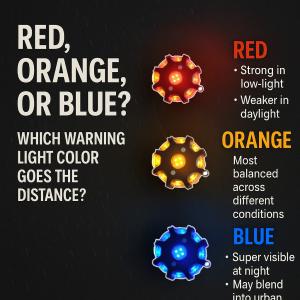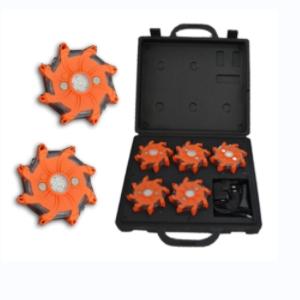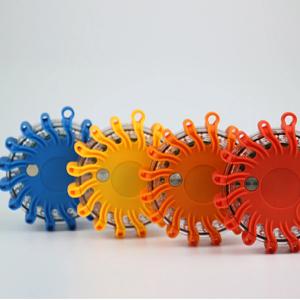Common Warning Light Buying Mistakes: Is the Brightness Enough? Is the Magnet Strong? Is It Waterproof and Impact-Resistant?
Warning lights are essential tools for traffic emergencies, outdoor work, construction maintenance, and everyday safety.
However, many people fall into common traps when purchasing them — such as choosing a light that's too dim, with weak magnets, or poor waterproof performance.
In this article, we will break down the most common mistakes and guide you on how to select a reliable and durable warning light.
Mistake 1: Focusing Only on Appearance, Ignoring Brightness
With the wide variety of warning lights on the market, it’s easy to be attracted by colorful designs.
But the core purpose of a warning light is visibility and attention, and that relies heavily on sufficient brightness.
Many cheap products might look good but lack adequate brightness, making them ineffective during real emergencies — posing major safety risks.
How to Choose Correctly:
-
Check the lumen rating: Lumen (LM) measures brightness. For general traffic emergency use, select at least 100 lumens, and for more demanding conditions, 200 lumens or above is recommended.
-
Look for multiple flashing modes: Fast flashing, slow flashing, SOS mode — different conditions require different lighting modes.
-
LED chip quality: High-quality LEDs maintain brightness longer and extend the product’s lifespan.
Pro Tip: Brighter isn’t always better — choose appropriate brightness based on your environment to avoid glare issues.
Mistake 2: Weak Magnet Strength, Poor Stability
Magnetic mounting is a major advantage for portable warning lights, especially when used around vehicles, heavy equipment, or steel structures.
Unfortunately, many cheap products use small or weak magnets that fail under slight vibrations or wind — seriously affecting safety.
How to Choose Correctly:
-
Check magnet size and quantity: High-quality models use larger and multiple magnets (at least two) for stronger holding power.
-
Test the magnetic strength: See if the light can firmly attach to car bodies, metal barriers, or scaffolding and stay stable under light movement.
-
Anti-slip design: Some premium models add rubber pads on the magnet to improve grip and vibration resistance.
Mistake 3: Underestimating Waterproof and Impact Resistance
Warning lights are often exposed to harsh conditions — rain, dust, mud, accidental drops.
Without proper protection, poor-quality lights can quickly fail when needed most.
How to Choose Correctly:
-
Confirm waterproof rating: Choose at least IP65 waterproof lights. If you anticipate heavy rain or immersion, opt for IP67 or above.
-
Look for rugged materials: TPR rubber casing or thickened PC plastic shells provide excellent drop and impact resistance.
-
Check seal design: Charging ports and switches should have protective covers or built-in waterproof gaskets.
Bonus Tips When Buying Warning Lights:
-
Battery capacity and runtime: Larger lithium batteries offer longer operational hours, essential for emergencies.
-
Charging interface: Modern Type-C charging is faster and more reliable compared to outdated Micro-USB ports.
-
Portability features: Look for foldable stands, magnetic bases, or carrying cases for better usability.
-
Certification standards: For professional use, select products with CE, RoHS, FCC certifications for guaranteed quality.
Conclusion: Choose Wisely, Protect Your Safety
A warning light may be small, but it can make a huge difference when it matters most.
Focus on the essentials: brightness, magnetic strength, and protection levels to ensure you have a trustworthy safety companion.
Don't be fooled by flashy looks or low prices.
Choosing a reliable, high-quality warning light is an investment in your safety — and peace of mind.
Stay safe, stay visible!




